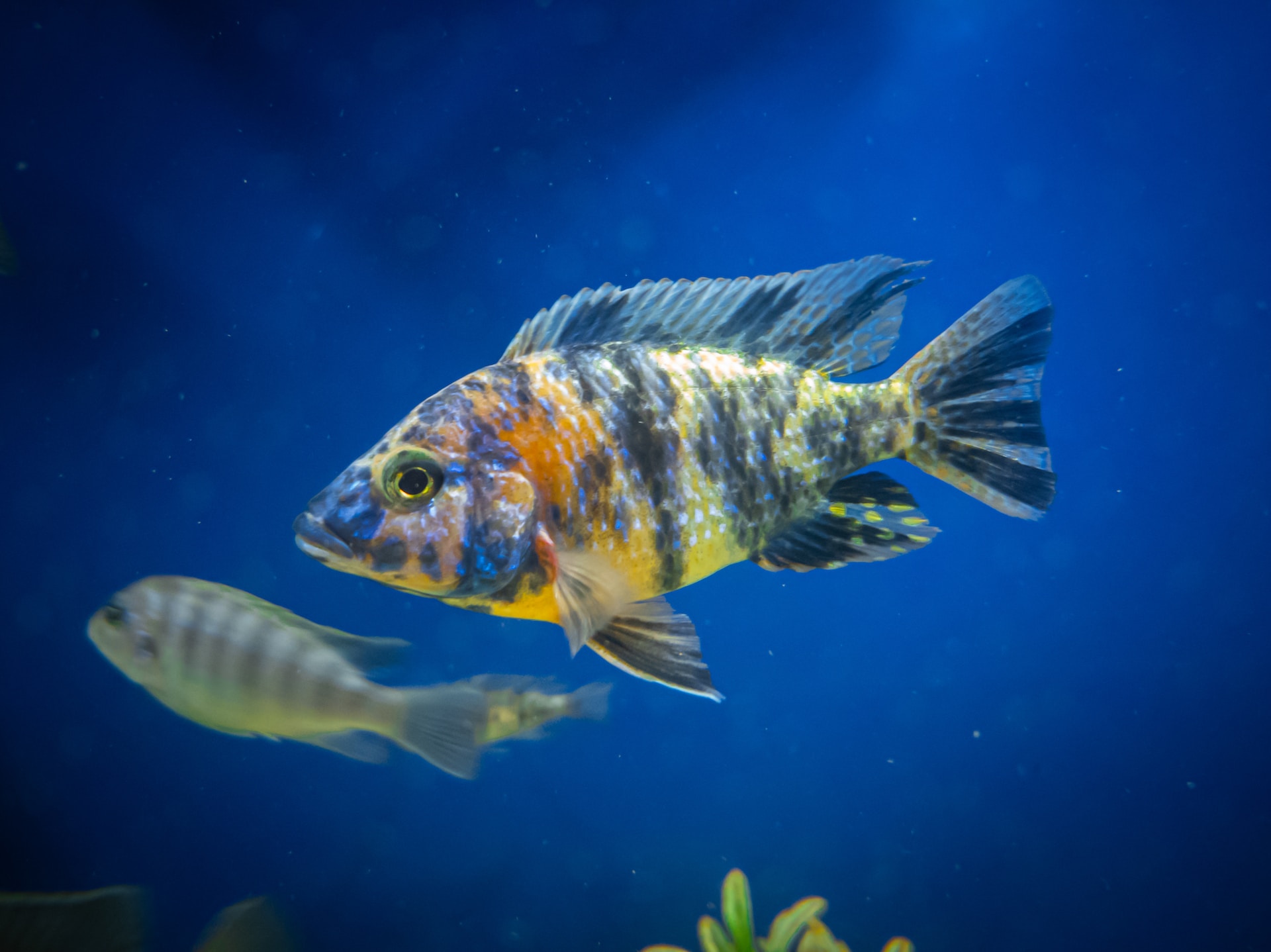Last Updated on January 19, 2024 by Dustin
African peacock cichlids, with their dazzling scales and feisty personalities, bring a vibrant splash of life to freshwater aquariums. But to truly set these underwater jewels aglow, you need to craft the perfect lighting and decor scheme. Let’s dive into the key considerations to create a dazzling domain that caters to your peacocks’ needs and aesthetics.
Sun-Kissed Splendor: Aquarium Lighting Essentials
- Mimicking the Rift: Peacock cichlids hail from the sun-drenched waters of East Africa’s Rift Valley lakes. Replicate their natural habitat with full-spectrum LED lighting that provides 10-12 hours of daylight per day. Aim for an intensity of 3-5 watts per gallon for optimal plant growth and fish coloration.
- Color Play: Enhance your peacocks’ vibrant hues with targeted lighting techniques. Blue LEDs can intensify their electric blue markings, while warm-toned LEDs can deepen reds and yellows. Experiment with dimmers and timers to create a natural sunrise and sunset effect, adding a touch of magic to your underwater world.
- Safety First: Always opt for waterproof LED lights specifically designed for aquariums. They ensure electrical safety and prevent harmful UV rays from reaching your fish. Regularly check for damaged cords or fixtures to maintain a safe haven for your finned friends.
Rocky Retreats: Building a Cichlid Paradise
- Rock Formations: Peacocks love caves and crevices to claim as territories and for spawning. Create a rocky landscape with smooth stones, driftwood, or commercially available aquarium decorations. Arrange them to form tunnels, overhangs, and hiding spots, but leave ample open swimming space.
- Substrate Savvy: Opt for fine sand or smooth gravel as the substrate. These are gentle on peacocks’ delicate fins and facilitate foraging, their favorite pastime. Avoid sharp rocks or decorations that could injure them.
- Botanical Flair: Live plants not only add a touch of natural beauty but also improve water quality and provide additional hiding spots. Choose hardy, low-light plants like Anubias, Java ferns, and Vallisneria that thrive in slightly alkaline water.
Strike a Balance:
- Harmony Over Havoc: Remember, too much decor can overcrowd your tank and stress your peacocks. Aim for a balance between open swimming space and hiding areas. Ensure easy access for cleaning and maintenance to keep your underwater world healthy and thriving.
Bonus Tips for a Thriving Peacock Paradise:
- Water Chemistry: Maintain a pH between 7.5 and 8.5 and hardness of 8-12 dGH to mimic the Rift Valley lakes’ conditions. Regular water changes and testing are crucial for optimal health.
- Tank Mates: Choose tank mates wisely. Avoid aggressive fish that could bully your peacocks, and opt for peaceful bottom feeders like corydoras catfish or algae eaters.
- Dietary Delights: Provide your peacocks with a varied diet of high-quality pellets, flakes, and frozen brine shrimp or bloodworms. A healthy diet fuels their vibrant colors and active lifestyles.
With careful planning and a touch of creativity, you can create an aquarium that’s not just a tank, but a dazzling underwater kingdom where your African peacock cichlids can flaunt their fins and thrive. Remember, the key is to find the perfect balance between lighting, decor, and water parameters to create a harmonious haven that reflects both your unique style and the needs of these captivating fish. So, get ready to dive into a world of shimmering scales and vibrant landscapes, and watch your peacock cichlids light up your life!
